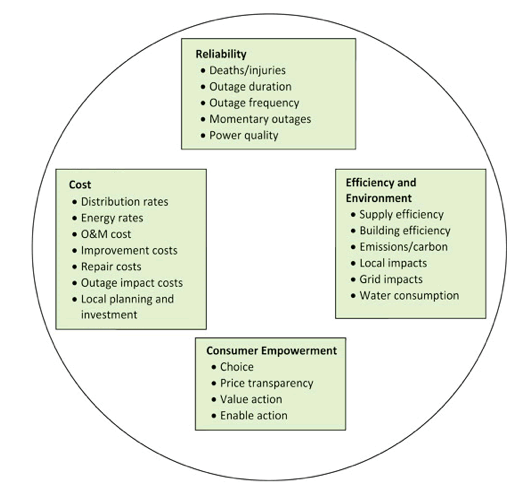
Modeled after the LEED building certification, the Perfect Power Seal of Approval would recognize excellence in smart grid development.
Currently one of the primary goals of the Galvin Electricity Initiative, the seal would measure reliability, efficiency, cost and consumer empowerment metrics of microgrids and smart grid systems. It is intended as a way to standardize and ensure quality of what is for many customers often still a suspicious system.

In the past, utilities have failed to carry through with their promises, Galvin Electricity Initiative’s Vice Chair Kurt Yeager told Breaking Energy, making consumer wariness of smart grid understandable. Instead of smart grid being a two-way intelligent communication system that conveys information about supply and demand at all times, smart grid has become “an iron curtain that blocks access by the consumer to the information,” Yeager said, “both in terms of real time usage of electricity and real time price of electricity.”
But, Yeager said, smart grid actually has the ability to save utilities and customers trillions of dollars in electricity costs, a number he said that has been confirmed by the US Treasury. The inefficiencies in the current system are staggering, he said.
“What do you think of a railroad where it takes 10 days to flip a switch,” he said he asks utilities. Just like a railroad system, utilities he said have a responsibility to update transmission lines.
Yeager, co-author of Perfect Power: How the Microgrid Revolution Will Unleash Cleaner, Greener, and More Abundant Energy, is set to speak at this week’s GridWeek Conference in Washington DC. At a panel conversation on smart grid and lessons learned, he told Breaking Energy that he plans to talk about consumer engagement with smart grid, something that he thinks is vital for success of the technology.
We have to “look at it through the eyes of the consumer,” he said. “That’s what its all about.” At the Thursday plenary roundtable where he is set to speak, he will address issues of financial incentives such as dynamic pricing, automated internet and technology systems for consumers and consumer education programs.
Smart grid should not be about “forcing this on people,” he said.
Beyond improving the efficiency of now-outdated and aging transmission lines, smart grid can also help with the incorporation of renewables, Yeager said, from single digit numbers to as much as 25-30% of the country’s generation portfolio. And, if done correctly, electric vehicles can be incorporated as well to store energy at night when electricity is cheap and put back into the grid in the afternoon during peak demand. If consumers could sell the power from their electric vehicle batteries, they could even drive mostly for free, Yeager said.
He said he understands that for older adults, it may be extremely difficult to change attitudes towards electricity use. But Yeager said he has hope for the younger generation that grew up with digital technology and understands its benefits.

Photo Caption: (TOP) The charging port of a CT&T e-Zone Hatch electric vehicle displayed during the press preview for the world automotive media North American International Auto Show at the Cobo Center January 12, 2010 in Detroit, Michigan.
